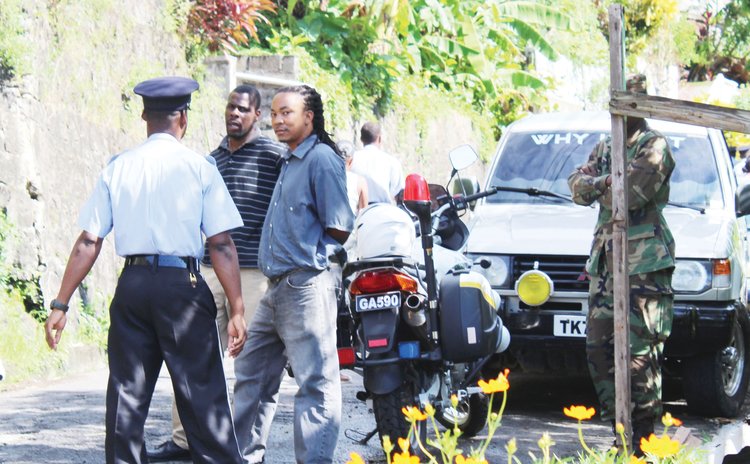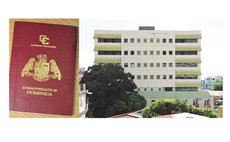State security officials must release annual crime statistics

Twenty Eighteen started with a bang. Unfortunately the sound that we heard was that of a gunshot that killed Derrick Peters of Sandwich Street in Portsmouth.
It was an ignominious beginning of a year that prompted Catholic Bishop Gabriel Malzaire to advise Dominicans that they must love their neighbors as themselves as Jesus Christ instructed his followers.
But we've past the second week in January 2018 and, as far as we know, there has not been another homicide. We all hope the situation stays that way because, if we are permitted to use a cliché, "one murder is one too many" and thus we started the year on the wrong foot with one, but too many murders.
Dominica's police officers are fond of using that overused line –one murder is one too many- but over the past few years the Police Commissioner ill-advisedly discontinued traditional practice when he refused to release annual crime statistics to the general public, because according to a reporter from THE SUN who repeatedly sought the information, the police believed that the figures were too distressing.
But as we reported earlier, in 2017 there were as many as 12 murders by June of that year and that figure had already exceeded the number of homicides for the whole of the previous year, 2016. That translates to an alarming estimate comparable to the highest in the world. But statistics can be misleading since Dominica has the reputation of being an extremely peaceful place where murder are so infrequent that a single killing makes the headlines on major news outlets. By comparison, Jamaica had 38 murders halfway through January, 2018.
In Dominica, in 2017 the most sensational killing involved Andy Carbon, from Boetica, whose lifeless body was found face down in a pool of blood on the Bay Front in Roseau one Friday morning. Carbon was a vagrant.
Responding to the increase in killings, at a press conference, Police Chief Daniel Carbon called for assistance of the public to reduce the number of murders, a dozen in six months in a country with a population of less than 80,000. But escalating crime is not a Dominican problem only.
Crime has been a major constraint to the development of the Caribbean and leaders must now do much more than talk about the problem. According to the World Bank's report: Crime, Violence and Development Trends, Costs and Policy Options in the Caribbean" murder rates in the Caribbean are higher than in any other region of the world and assault rates are significantly above the world average. What are the major causes of such alarming statistics?
For instance, we know that Caribbean countries are fast lanes for the cocaine traffickers of Latin America and that gun ownership, an offshoot of the drug trade, is the fuel that ignites violent crime. Youth violence driven by alcohol abuse, we are told, has become a major threat to public health and criminal deportees from the United States have directly and indirectly contributed to the increase in crimes in the region.
Additionally, the criminal justice system is ineffective and inefficient; and the emergence of gangs among our youth is one of the most disturbing aspects of the growing crime culture.
Most importantly, the root of today's lawlessness has been attributed to the loss of respect for the State and the rule of law. People in high places are committing crime with impunity, and don't for one moment believe that this situation escapes the attention of the youth.
And, most importantly, there are the effects of poverty and destitution as the recent case of Andy Carbon, the vagrant, illustrates.
The point that we need to stress here is that as we continuously discuss the high incidence of poverty in Dominica we fail to consider its causes and effect. It is our view that poverty means much more than someone's inability to pay bills. Poverty not only imposes short-term hardship on thousands of Dominicans, it also has long-term consequences for children. The evidence is overwhelming that poverty compromise children's health, reduces their educational prospects, increases their risk of arrest and incarceration and diminishes options for the future.
Additionally, we are of the view that high levels of poverty and unemployment have a significant impact on levels of crime and violence. Poor young persons in particular generally have little regard for values and corruption and are prone to be dependent on politicians who offer money in exchange for political support.
Undoubtedly, increasing crime rates are caused by its high levels of poverty. Speaking at the University of the Virgin Islands a few years ago, on the topic: "Poverty and its alleviation in the Caribbean", Dr. Compton Bourne, the former President of the Caribbean Development Bank, contended that poverty contributes to societal exclusion, loss of self-confidence and absence of commitment to the future of the community.
"Even though poverty is not the only cause of crime, it is a cause," Dr. Bourne said.
In the Dominican context poverty, we argue, is caused by low income and high unemployment and, to a lesser extent, inequality in the distribution of the nation's wealth and resources.
Catastrophes like Hurricane Maria will only make the crime situation worse and Dominica's crime fighters as well as the average citizen have to be conscious of a pending escalation in crime.
But the Police Commissioner or the Minister of Justice must help us monitor the situation by releasing Dominica's annual crime statistics.




